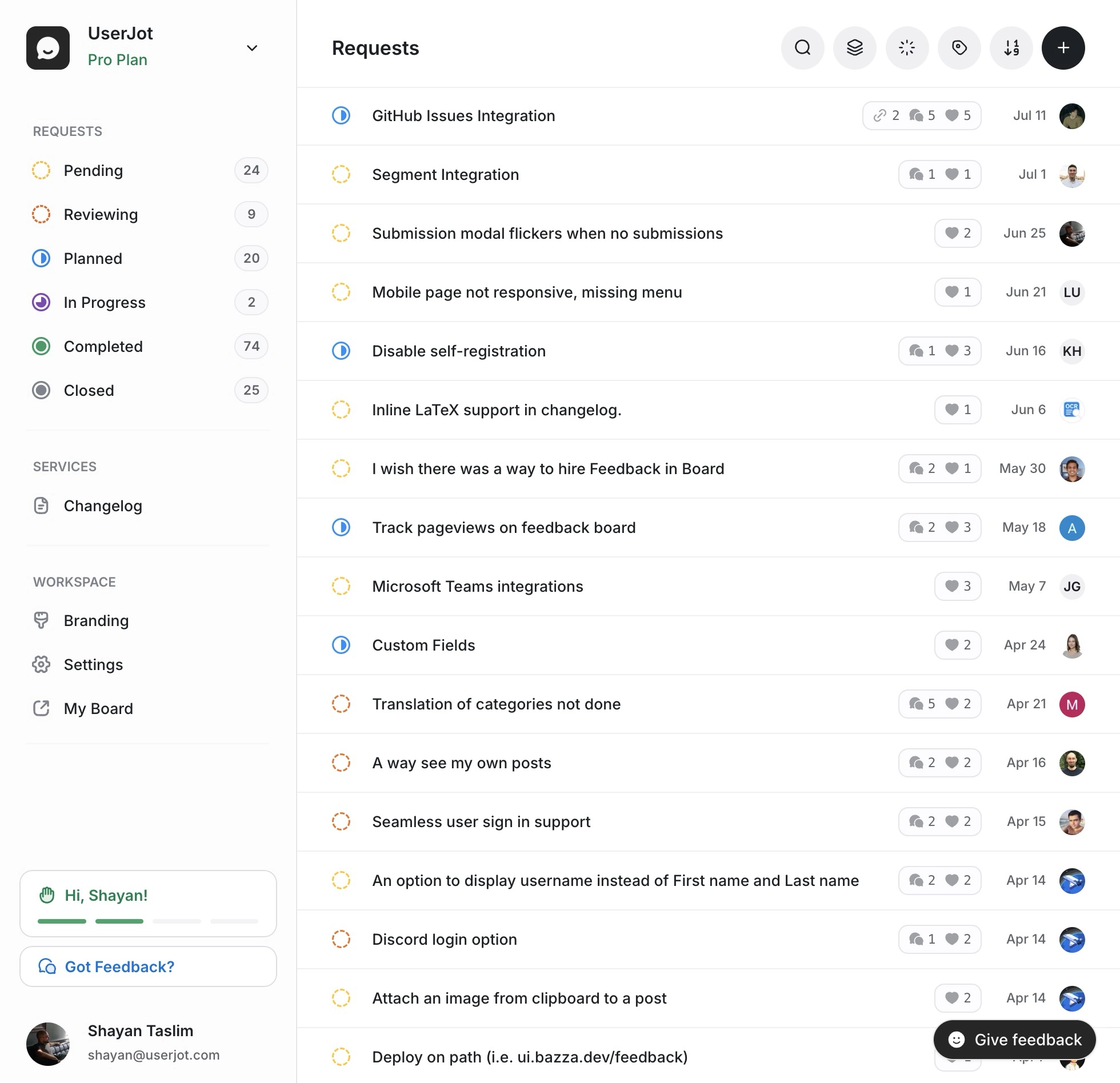Claude Code Pricing: Is the $200/mo Plan Worth It? (New Rate Limits Explained)

I moved from Cursor to Claude Code about a month ago. Initially I was hesitant about paying $100/month, let alone $200. But after trying the $100 plan and hitting limits within a week, upgrading became a no-brainer.
I’ve been building UserJot as a solo developer, so AI coding assistants have been really important for me to move fast and handle tasks I don’t have time for. The difference between models really matters when you’re shipping features daily.
Despite all the rate limit controversy happening right now, I think the $200 plan delivers good value if you’re doing serious development work. Let me break down the pricing, what’s happening with the limits, and why Opus 4 makes the difference.
Claude Code Pricing: What You Actually Get
The current pricing structure that’s causing all the fuss:
- Free Plan: $0 (No Claude Code access, just basic Sonnet)
- Pro Plan: $20/mo (10-40 Claude Code prompts every 5 hours)
- Max Plan: $100/mo (50-200 prompts every 5 hours)
- Max Plan: $200/mo (200-800 prompts every 5 hours)
For comparison:
- Cursor Pro: $20/mo (~225 Sonnet 4 requests/month)
- Cursor Ultra: $200/mo (~4,500 Sonnet 4 requests/month)
- Gemini CLI: Free (1,000 requests/day)
The New Rate Limits
Last week, Anthropic announced new weekly rate limits starting August 28. The reaction from developers has been pretty negative.
What they announced:
Pro users ($20/mo): 40-80 hours of Sonnet 4 per week Max users ($100/mo): 140-280 hours of Sonnet 4, plus 15-35 hours of Opus 4 Max users ($200/mo): 240-480 hours of Sonnet 4, plus 24-40 hours of Opus 4
The thing is, these “hours” aren’t actually hours. They’re token-based limits that vary depending on your codebase size, conversation length, and what kind of text you’re working with.
Someone did the research and found the actual token limits per 5-hour session:
- Pro: ~44,000 tokens
- Max $100: ~88,000 tokens
- Max $200: ~220,000 tokens
It’s confusing and vague. When they say “24-40 hours of Opus 4,” that doesn’t really tell you anything useful about what you’re actually getting.
The Reddit reactions show how frustrated people are. People are cancelling their Pro plans, calling the new limits a joke. The $200 plan that’s supposed to be 20x more than Pro feels more like 5x in practice.
Why I’m Still Paying $200/Month
When I switched from Cursor to Claude Code, I wasn’t sure about a CLI tool. But Opus 4 is honestly the best coding model I’ve used.
A few things that make it stand out:
UI/Frontend Work: It actually understands design. When I say “make this look modern,” it knows what I mean. Other models give me Bootstrap circa 2015.
Following Instructions: It gets complex requirements right the first time. Not always, but way more often than anything else.
Context Understanding: Throw a whole codebase at it. It gets how everything connects.
Meanwhile, Sonnet 4 is facing serious competition. Moonshot AI’s Kimi K2 and z.ai’s GLM 4.5 are benchmarking near Sonnet levels. They’re open source. They’re cheap. Chinese companies are moving fast.
But nothing’s matching Opus 4 yet. That’s Claude Code’s main advantage.
The thing is, this advantage won’t last forever. We already have open source models matching Sonnet 4, which is a really solid coding model. It’s inevitable that we’ll get an open source model matching Opus 4 relatively soon. When that happens, these prices will have to change.
Will Anthropic drop prices? Will everyone move to open source? Of course, Anthropic will release something better than Opus 4, and then the cycle continues. We’ll all switch to whatever’s best. Everyone’s wondering if these $200/month prices are sustainable when open source keeps catching up.
The Power User Problem
Anthropic says these limits affect less than 5% of users. They’re targeting people running Claude Code “continuously in the background, 24/7.”
The issue is they don’t specify if that’s 5% of Max plan users or 5% of all users. That vagueness has people worried.
The abuse is real. One user apparently burned tens of thousands in compute on a $200 plan. People are running multiple instances, automating them to run 24/7, account sharing, reselling access. It makes sense that Anthropic wants to stop this.
But the concern is whether this becomes collective punishment. If they’re just trying to stop obvious abuse, that’s fair - nothing is truly unlimited and there should be reasonable use policies. But if these limits start affecting regular professional developers to push them toward higher tiers or API usage, that’s where it gets questionable.
Right now, legitimate power users are getting caught in the middle. Professional developers working on real projects are hitting these walls.
Is It Worth $200?
The $200 Max plan gives you 200-800 prompts every 5 hours. The range is wide because it depends on message length and complexity.
I haven’t hit the limit on the $200 plan using Opus 4, and I use it quite a lot on a relatively big codebase. I’m getting what would be thousands of dollars worth of API usage every month.
In my opinion, the $200 plan is absolutely worth it. The real question is how much higher people would be willing to pay for the same service. But right now $200 is a no-brainer if you’re doing serious development work.
If you’re building something serious and need the best model available, the $200 plan makes sense. If you’re learning or working on smaller projects, try Gemini CLI first. It’s free and surprisingly good.
Just know what you’re signing up for. The rate limits are real. The community frustration is valid. But if you need Opus 4, there’s nothing else like it.
I mentioned UserJot earlier. It’s the feedback, roadmap, and changelog tool I’ve been building. Claude Code and especially Opus 4 have been huge for nailing the UI and shipping features quickly. If you’re looking for something more affordable than the big players in the space, check it out.

Stop guessing what to build. Let your users vote.
Try UserJot freeFinal Thoughts
Claude Code’s pricing structure and rate limits are definitely causing frustration. The community reaction is understandable. People are paying premium prices and hitting unexpected walls.
But Opus 4 remains the best coding model I’ve used. For professional development work where quality matters, the $200 plan still makes sense.
Competition is heating up. Google’s free Gemini CLI is solid. Open source models are improving fast. Cursor keeps iterating.
If you’re doing serious development and can afford it, Claude Code’s $200 plan is worth considering. Just be aware of the rate limits going in. For everyone else, the free alternatives might be enough.
FAQ
What’s the main difference between Claude Code’s Pro and Max plans?
Pro ($20/mo) gives you 10-40 prompts every 5 hours with limited access. Max plans ($100-200/mo) offer 50-800 prompts every 5 hours plus Opus 4 access, which is the most advanced model.
Why are developers angry about the new rate limits?
Anthropic introduced weekly caps without warning. Many developers report hitting limits in 30 minutes and waiting hours to continue, making it “unusable for real work.”
Is the $200 Max plan actually worth it?
If you need Opus 4 for professional development, yes. It’s currently the best coding model available, especially for UI/frontend work. For casual use, try free alternatives first.
How does Claude Code compare to Cursor’s pricing?
Both offer $200 top tiers, but usage differs. Cursor gives ~4,500 Sonnet 4 requests/month. Claude Code offers 200-800 prompts per 5 hours, but includes Opus 4 access.
What makes Opus 4 better than other models?
Superior context understanding, much better UI/design capabilities, and higher success rate following complex instructions. It’s particularly strong for frontend development.
Can I use Claude Code with just the Pro plan?
Yes, but with significant limitations (10-40 prompts every 5 hours). Most professional developers find they need at least the $100 Max plan.
When do the new weekly rate limits take effect?
August 28, 2025. They’ll add weekly caps on top of existing 5-hour limits, affecting both Pro and Max subscribers.
Are there free alternatives to Claude Code?
Yes. Google’s Gemini CLI offers 1,000 requests/day completely free. It’s powerful but lacks Opus 4’s capabilities for complex coding tasks.
Will the rate limits affect most users?
Anthropic claims less than 5% of users will notice. However, many professional developers report already hitting limits regularly, suggesting the impact may be larger.
Can I buy additional usage beyond the rate limits?
Max subscribers can purchase extra usage at standard API rates, but this can get expensive quickly for heavy users.